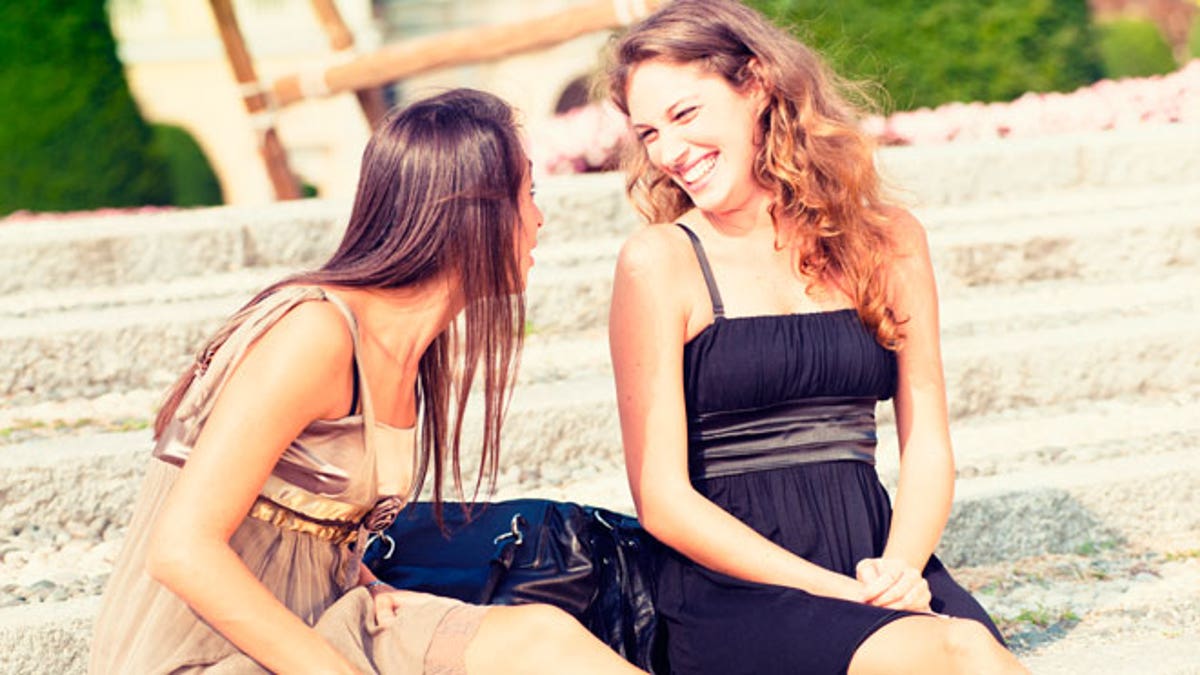
Women's sexual orientation may be partly influenced by their romantic options, new research suggests.
Women in the study who were rated as more attractive — and so, presumably, could attract sexier mates — were more likely to identify themselves as completely straight than the women who were less attractive, according to a comprehensive survey of health and sexual behavior among teens and young adults.
In addition, the study confirmed that women tend to be more flexible than men in their sexual orientation, with women in the study being nearly three times more likely than men to experience a change in their orientation during the study.
That doesn't mean that lesbians or bisexual women are settling for the ladies because the "good men" are all taken, said study author Elizabeth Aura McClintock, a sociologist at the University of Notre Dame in North Bend, Indiana.
"I do not claim that women become lesbians because they are not attractive enough to get men," McClintock told Live Science in an email. "One could just as easily imply that some women never have the opportunity to partner with women because they are caught up in the pressure of hetero-normativity," or the pressure to adhere to straight norms. [51 Sultry Facts About Sex]
Rather, the study suggests that women who are rated as less attractive may feel less pressure from straight norms and so are free to explore same-sex attractions.
If sexual orientation is a spectrum, with absolute straight or gay attraction on either end, then more women than men are in the middle of the curve. Evolutionary psychologists have proposed that women may be more heteroflexible because it made good evolutionary sense. Women who were raped or whose partners ran off or died would have better success if they paired up with another woman to raise their children, rather than going it alone.
To understand the factors affecting sexual orientation, McClintock analyzed data from a large, ongoing study called the National Longitudinal Study of Adolescent to Adult Health, which began tracking about 14,000 teenagers in 1994. (A 2014 study in the journal Archives of Sexual Behavior suggested that some of the survey's data on sexual orientation may be unreliable because teens who answered questions may have self-identified as gay, even though they were not, as an immature joke.)
In the new study, McClintock looked at data from the first time the participants were surveyed, in 1994-1995, when they were 16 years old. She compared that data with surveys done in 2001-2002, and then again in 2007-2008, when they were 28.
Unsurprisingly, fewer women than men reported being either 100 percent heterosexual or 100 percent homosexual. Women were also three times as likely to switch orientations between the 2001-2002 survey and the 2007-2008 survey.
Interestingly, women who had children at a youngage — for example, before they were 22 — were less likely to report being 100 percent straight in the 2007-2008 survey, than women who had children later, according to the findings McClintock presented today (Aug. 25) in Chicago at a meeting of the American Sociological Association (ASA).
In contrast, women who were highly educated as well as rated more attractive by their interviewer were more likely to rate themselves as 100 percent heterosexual, McClintock said.
For men, the reverse was true. Well-educated men were less likely to identify as totally straight, and young fathers were likelier to say they were 100 percent straight. Male attractiveness didn't correlate with sexual identification, McClintock found.
Romantic opportunity
In her presentation, McClintock argued that although sexual desire or attraction may be largely innate, sexual orientation is at least partly socially constructed, similar to the concept of race. If that's the case, then a woman's environment may influence whether she acts on her attractions to women. That doesn't mean that women decide to be gay or bisexual, however, she said.
"Women who are initially successful in partnering with men, as is more traditionally expected, may never explore their attraction to other women. However, women with the same sexual attractions, but less favorable heterosexual options might have greater opportunity to experiment with same-sex partners. Women who act on same-sex attraction are more likely to incorporate same-sex sexuality into their sexual identities," McClintock said in a statement.
On the other hand, it's also possible that interviewers rated women more attractive when they follow conventional beauty norms — maintaining a certain weight, doing their hair a certain way, or generally getting dolled up. That, in turn, may mean they are also more likely to conform to society's traditional norms in other ways, and so they may be less likely to act on same-sex attractions or identify themselves as anything but straight, McClintock said.
- 5 Myths About Gay People Debunked
- 10 Facts Every Parent Should Know about Their Teen's Brain
- 10 Scientific Tips For Raising Happy Kids
Copyright 2015 LiveScience, a Purch company. All rights reserved. This material may not be published, broadcast, rewritten or redistributed.
